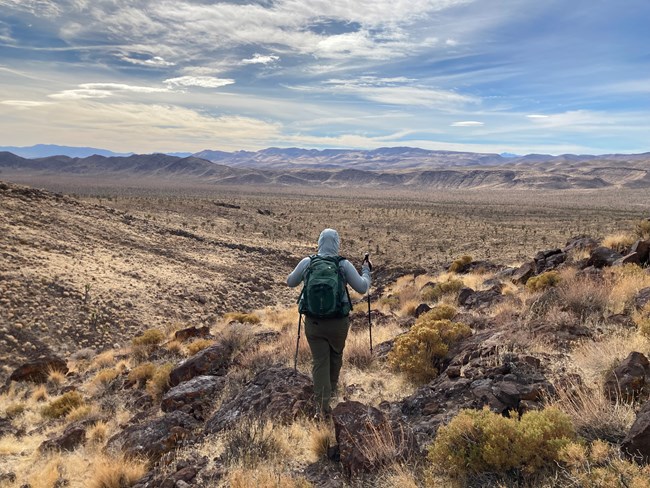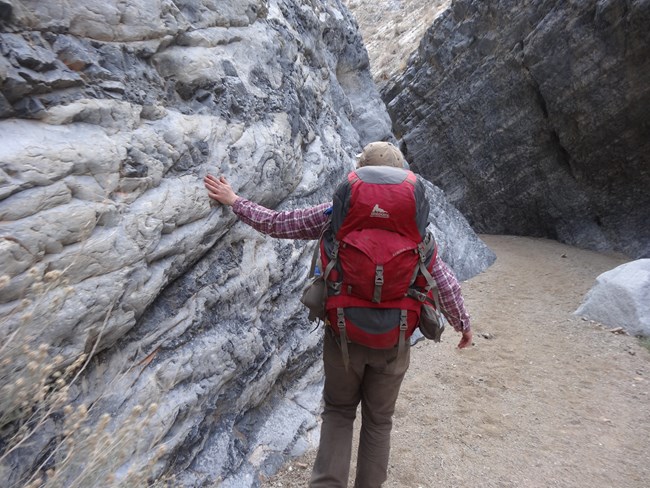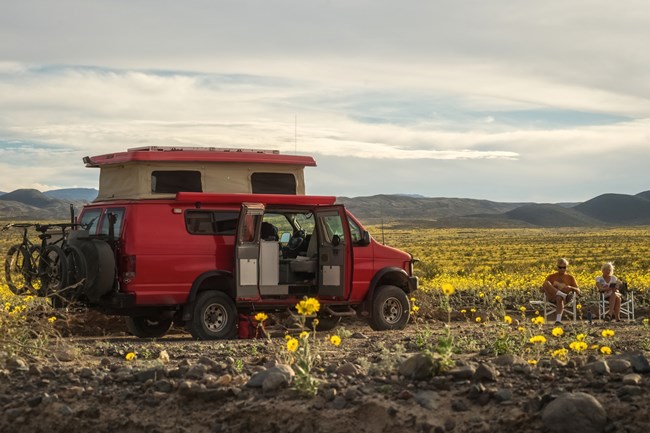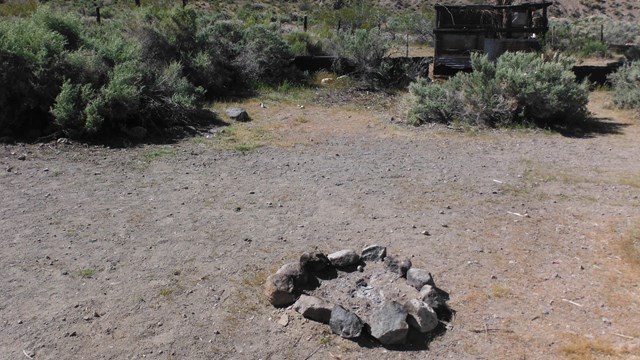![Wilderness is "an area [...] where man himself is a visitor who does not remain." Wilderness Act of 1964 View from a bare rocky ridge of desert mountains with a desert valley below.](/deva/learn/nature/images/Eureka-Valley_NPS-E-Letterman.JPG?maxwidth=1300&maxheight=1300&autorotate=false&format=webp)
NPS/E. Letterman Death Valley WildernessDeath Valley National Park contains the largest wilderness in the contiguous United States (over 3,190,400 acres or roughly 93% of the park!). Death Valley Wilderness, a designated wilderness area, was created by the California Desert Protection Act in 1994 and has grown over the years with the passing of additional acts and with new land aquisitions. 
NPS/E. Letterman The History of WildernessWilderness, as defined in the Wilderness Act of 1964, is land "protected and managed so as to preserve its natural conditions and which generally appears to have been affected primarily by the forces of nature, with the imprint of man's work substantially unnoticeable." During the late 1800s, Americans became concerned with the rapid development of natural resources and disappearance of wild places, which led to government protection of early national parks such as Yellowstone and Sequoia. These parks were primarily set aside for their scenic qualities.
Visit our keyboard shortcuts docs for details
The Wilderness Act of 1964 established the National Wilderness Preservation System, a national network of more than 800 federally-designated wilderness areas. These wilderness areas are managed by the National Park Service, Bureau of Land Management, US Fish and Wildlife Service, and US Forest Service. 
Indigenous artist Thomas “Breeze” Marcus Happy Birthday, Wilderness!This year celebrates the 60th anniversary of the signing of The Wilderness Act of 1964, which protects designated areas with wilderness characteristics from development. How will you celebrate? Today, there are more than 109 million acres of federally protected wilderness in 44 states. Although this may seem like a huge area, it is only about 5% of the land in the United States. Check out the maps on Wilderness Connect to see the extent of wilderness in Death Valley National Park or to find a wilderness area near you. 
Why is Wilderness Important?The benefits of wilderness have been cited for centuries. William Shakespeare noted that "one touch of nature makes all the world kin" and nineteenth century American philosopher Henry David Thoreau declared "in wilderness is the preservation of the world." Wilderness areas provide beauty, solitude and inspiration and can invoke a sense of responsibility to protect the Earth while providing opportunities for discovery and wonder. Time spent in wilderness and outdoor places has been tied with improved mental health and reduction of stress. 
NPS How to Explore Death Valley WildernessPeople started exploring the Death Valley area long before wilderness was given the definition we have today. The Timbisha Shoshone people have been here since time immemorial, miners have search for riches in the valleys and mountains and early tourists came to experience "Hell on Earth." 
NPS/Kurt Moses Although there are few maintained trails, the well-prepared traveler will find a lifetime's worth of exploring in Death Valley National Park. Even a short walk away from the road will immerse you in the solitude and silence that defines the Death Valley wilderness experience. If you're planning a longer trip, be sure to tell someone outside the park where you're going and fill out a free Wilderness/Backcountry Permit.
Visit our keyboard shortcuts docs for details
Follow a group of students from the University of California Merced on their first overnight trip into the wilderness of Death Valley National Park. What Degrades Wilderness?Wilderness is preserved for all of us, however there are many things which can harm wilderness and detract from our enjoyment of this valuable resource. Click the images below to learn about some of the biggest threats to Death Valley Wilderness.
Off Road Driving
Just a few minutes of off road driving can leave scars which last decades. 
Prohibited Activity
Illegal fire rings, drones, graffiti, pets and trash can take away from wilderness. 
Non-native Species
Some plant and animal species not naturally found in Death Valley are having negative impacts on native species. How Can You Help Protect Wilderness?You can be a good steward of wilderness by following Leave No Trace, teaching others how to behave respectfully in wilderness and reporting illegal actvity to park rangers. Not done exploring?Learn more about Wilderness |
Last updated: October 6, 2024
